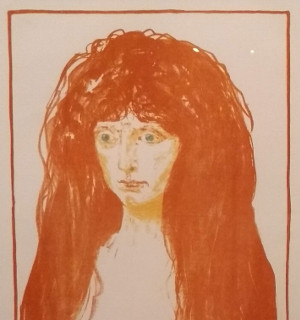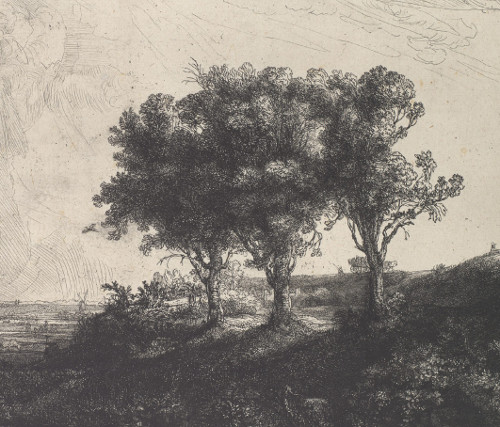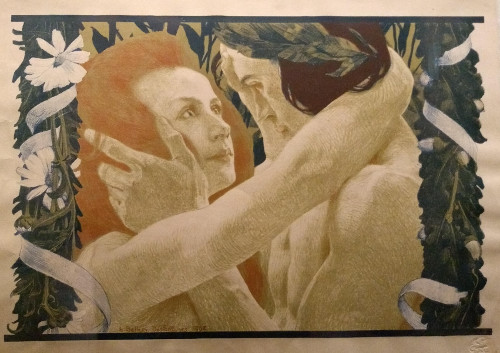
Above: Saskia with the Red Flower (detail), 1641, oil
As well as visiting a famous museum to look at Rembrandt prints, I caught the first program (of two) the BBC have produced called Looking for Rembrandt. This is one of those productions that make the BBC so good, and the license fee worthwhile. It tells the life of the artist in his own words, with a backdrop of Leiden and Amsterdam, talking to curators, collectors and archivists. Wonderful and moving. I've yet to see the second program but look forward to it.

Angst and anxiety really came of age in the Nineteenth Century: the age of Nietzsche, Freud and Marx, as well as nihilism, anarchism and nationalism. A lot of "isms" and various pathologies we still live with today. The Norwegian apostles were Ibsen and Munch, two artists who stripped away a middle-class veneer of respectability and exposed something darker or lonelier underneath.
The British Museum has a very good exploration of the art of Edvard Munch just now, with a large number of his famous and less familiar prints, most from the Munch Museum in Oslo. Striking, spartan and often troubling, they seem to portend the cataclysms building up inside Europe, ready to explode in 1914.
Below: Woman with Red Hair and Green Eyes: Sin,1902

More Print Mastery
In Room 90, the Museum's print and drawing gallery, an exhibition of prints (and a few drawings) from Rembrandt, a master print maker as well. The prints are beautiful, but there is also a story in their creation and the techniques used. Drypoint and etching are two methods, with the print having various stages of production. A technical as well as artistic process, I would like to know more. I think watching the process would help.

Above: Three Trees (detail), Rembrandt, 1643, etching, dry[pony, engraving
Not only Rembrandt: also in Room 90 is a small exhibition of Symbolist prints, some a good complement to the Munch show downstairs.

Above: L'Enigme (The Riddle),Henri Bellery-Desfontaines, 1898, Lithograph
Room 90 is a gem, slightly hidden away at the top of the rear of the museum. It has had some wonderful displays over the past few years and its slight remoteness means it is a bit quieter and therefore a more pleasant place to be. Crowds are getting larger.



